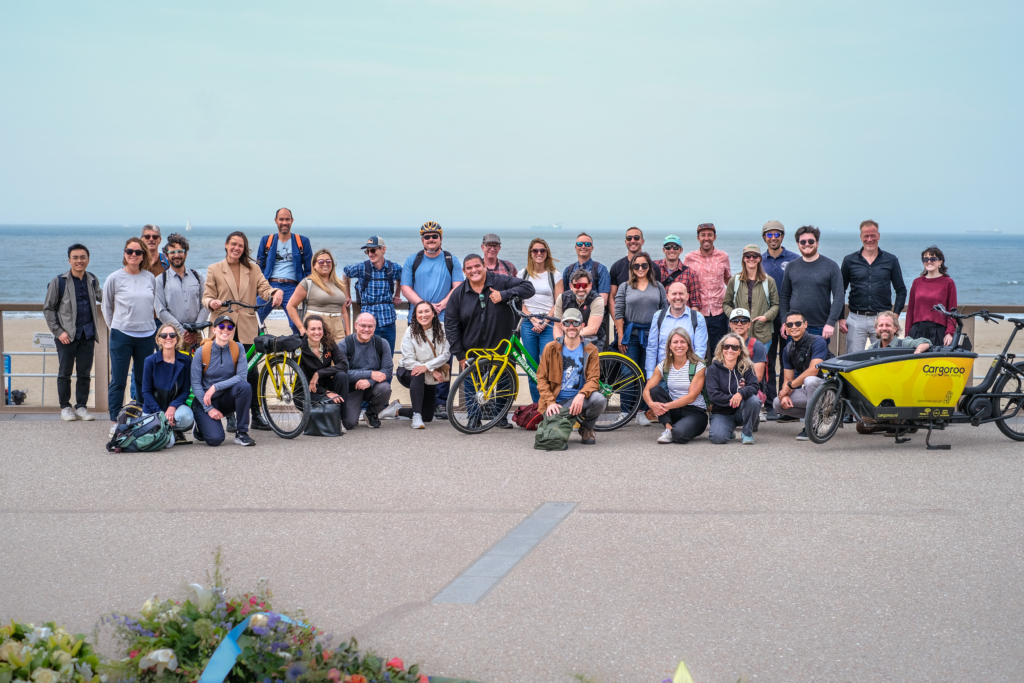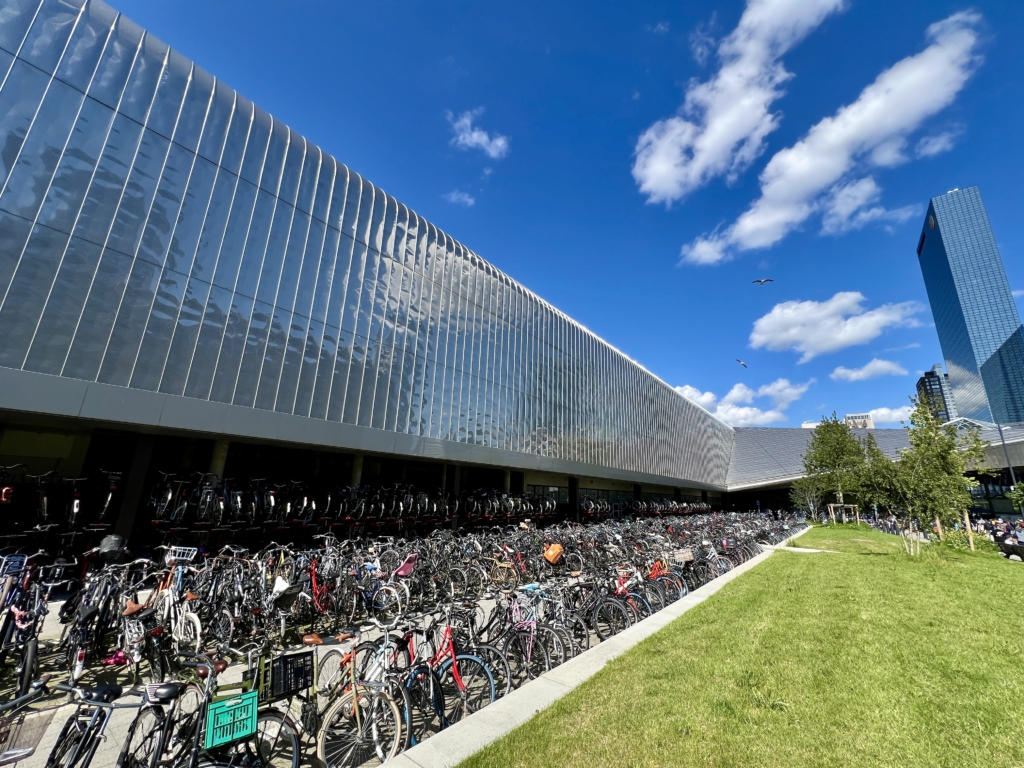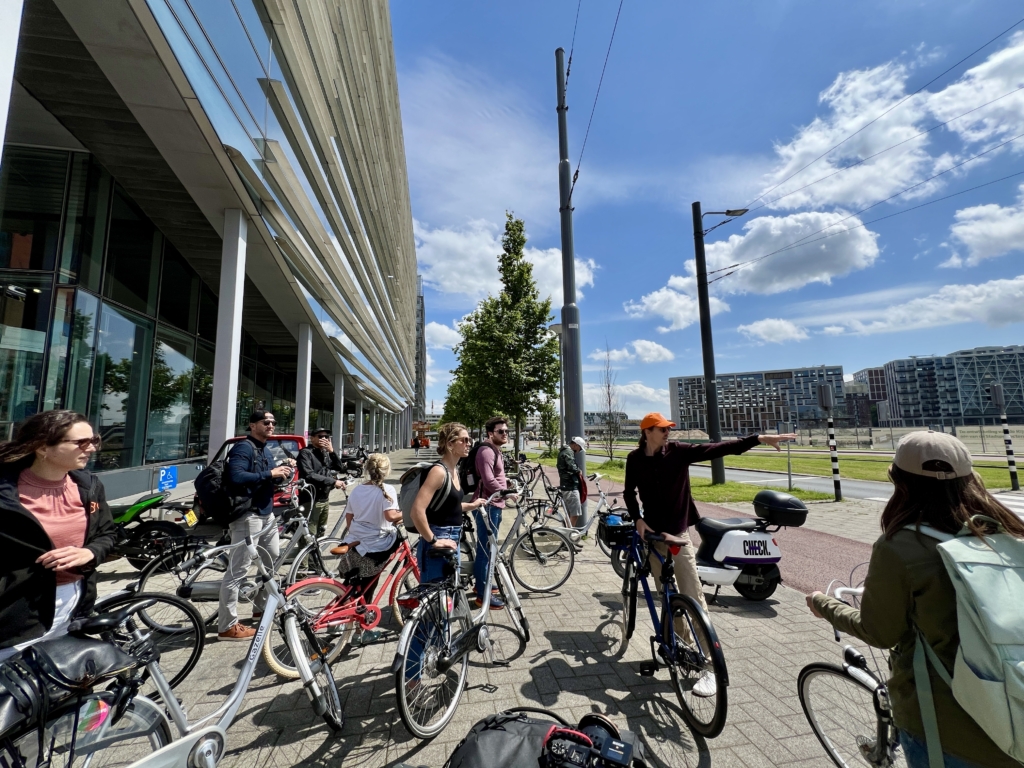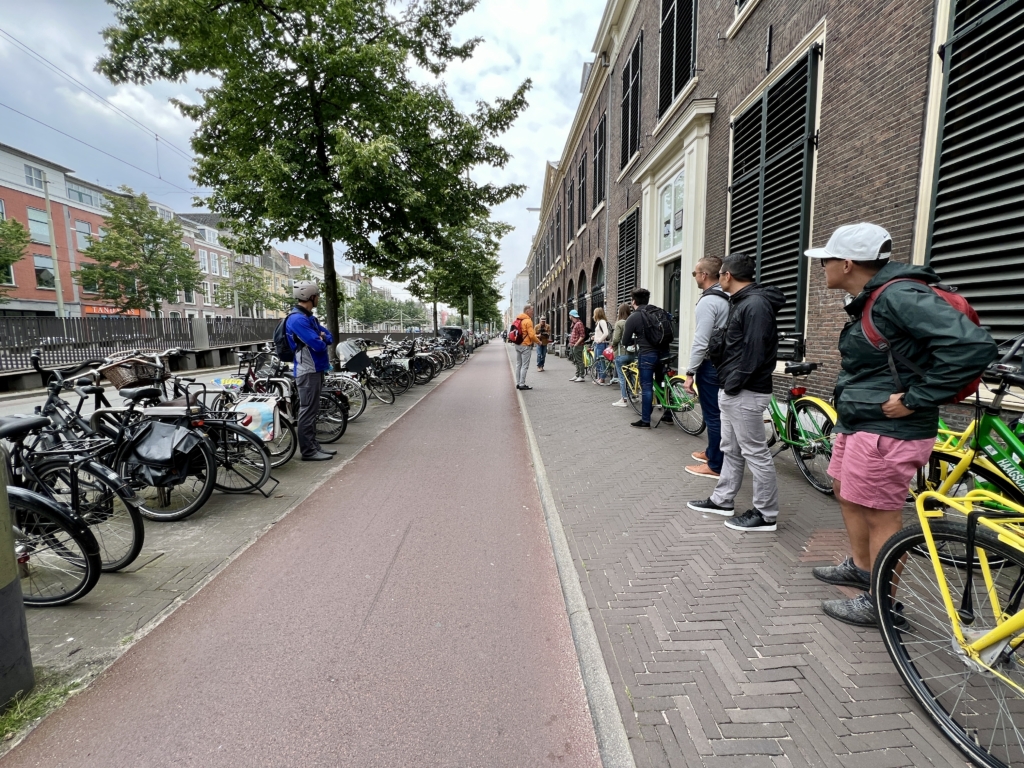Featured |
World Class Mobility – How a Journey to the Netherlands is Steering Santa Cruz County Toward a Better Future
It’s been 34 years since the first Intergovernmental Panel on Climate Change report warned us about the escalating dangers of a warming planet. Since then, we’ve witnessed remarkable advancements in clean technology, robust climate policies, and a surge in electric vehicle adoption. Yet, despite these strides, one sector stubbornly remains the top culprit in greenhouse gas emissions: transportation.
In Santa Cruz County alone, transportation-related emissions account for nearly 60% of all emissions—a figure that mirrors the broader trends in California and the nation. This relentless contribution not only fuels climate change but also exacerbates unsafe streets, traffic congestion, and environmental pollution. Moreover, it disproportionately burdens those who cannot or choose not to drive, limiting their mobility and quality of life in our car-dominated transportation system.
For over half a century, Ecology Action has been at the forefront of advocating for equitable climate solutions in high-emitting sectors. Our transportation efforts across Monterey Bay and the greater Central Coast – ranging from pedestrian and bike safety, EV adoption, and sustainable infrastructure – have touched thousands of lives. Yet, the dream of active transportation as a viable everyday option remains just out of reach. What stands between us and mass adoption? It’s the very infrastructure and environment we navigate daily, making it unsafe or uncomfortable for pedestrians and cyclists despite their knowledge, equipment, and motivation.
Inspired by the transformative Think Bike Workshop we hosted in Santa Cruz in 2022, Ecology Action seized an opportunity to build on the momentum by organizing a delegation of Santa Cruz County transportation leaders for a study visit to the Netherlands. Our goal of the delegation was clear—to witness firsthand how Dutch mobility principles are seamlessly integrated into everyday life and to identify opportunities to replicate their success back home.

Netherlands Study Visit 2024 – Santa Cruz County Delegates
The delegation had representatives from the Cities of Watsonville, Scotts Valley, Capitola, and Santa Cruz, the County of Santa Cruz, UC Santa Cruz, the Santa Cruz County Regional Transportation Commission, Transportation Agency of Monterey County, and the Association of Monterey Bay Area Governments. While in the Netherlands, our delegation of 30 local leaders, which included elected officials, city planners, and transportation experts, immersed themselves in the world-class Dutch mobility system. From the bustling streets of The Hague to the innovative intersections of Rotterdam and the serene bike routes in Delft, we absorbed invaluable lessons on infrastructure design, traffic calming, and sustainable transportation incentives. Beyond the expert presentations, the value of the trip was in directly experiencing the infrastructure and how it contributes to safety, mobility, and high quality of life. These insights are not just lessons learned but blueprints for the change we aim to implement in Santa Cruz County and beyond.

Thousands of bikes parked outside Rotterdam Central Train Station
Today, the Netherlands boasts the highest percentage of bike trips in the world, a status they did not achieve by accident. After World War II, the Netherlands rebuilt its damaged infrastructure with a strong emphasis on cars and highways, constructing large boulevards to accommodate vehicular traffic. However, by the 1970s, a convergence of crises—including road safety concerns and the oil crisis—created an inflection point for both the Dutch people and their government. Large-scale demonstrations called for change, leading to a commitment to invest in safety, mobility, and livability. Bike-friendly policies began to shape city transportation plans across the country. In other words, the Netherlands chose to invest in diverse mobility options, and today, their country reflects that investment.

Delegate infrastructure bike tour of the City of Rotterdam
We asked our delegates to select the most important and relevant transportation topics they wanted to learn while in the Netherlands, and we identified the following seven:
- Network Planning – Locations need to be connected to support people traveling to different places every day. So, we must think beyond a single route and look at a network of routes. For biking to be a viable options in a multimodal transportation system, you have to be able to go from anywhere to everywhere via comfortable and recognizable bike routes, with consistent design and safe intersections.
- Infrastructure Design – Design for the behavior you want on your roads. In the Netherlands, they design roads for the cars to go the speed they want them too. Design roads that encourage the behavior of slowing down (i.e. narrower roads, chicanes, street trees, etc.) Apply the five principles for bike network design, cohesion, directness, safety, attractiveness, comfort.
- Cycle Highways – Inter-urban connections can be made by creating cycling highways. For longer distance cycling highways, the emphasis is not on maximizing speed but on minimizing stops and maintaining a steady pace.
- Car Management – Adding more road space does not decrease congestion, the solution for traffic management is offering different mobility options. Integrated and hierarchical road networks, speed management, street design, parking management, and spatial planning.
- Intersection Design – A network is only as good as its weakest link. Intersections are where most collisions occur and where we see cycling infrastructure often “disappear”. Signalized and unsignalized intersections (i.e. roundabouts) provide physical protection for bikes and pedestrians and are designed to reduce speed, raise awareness, and increase safety for all road users.
- Pop-Up to Permanent Infrastructure + Tactical Urbanism – Tactical urbanism can be a starting point in an area’s transition to multimodal friendly infrastructure. It can start with pop-up installations (using cheaper and easier to deploy materials) to more permanent solutions over a phased approach with community input, monitoring, and iterating design.
- School Zones – One of the key design principles for safe infrastructure in the Netherlands is to design for the behavior you want, and that is especially true for school zones. In the US context, many roads invite car drivers to speed, including around school zones. In the Netherlands, school zones are designed to slow down traffic while still providing access to cars.

City of Delft roundabout intersection
The delegates engaged in an in-depth exploration of these curriculum topics, guided by world-class experts. Yet, the most profound takeaway was recognizing that these principles serve as a foundation for building inclusive communities where everyone feels safe, has seamless access to mobility, and can lead happy, healthy lives.
This trip was made possible by the generosity and shared vision of our Ecology Action donors. It is with their support that we are able to implement innovative models for change for our communities.
As we move forward, Ecology Action is actively collaborating with our delegates to integrate the valuable lessons learned from the Netherlands into our local transportation plans and budgets. By weaving these best practices into the fabric of Santa Cruz County’s infrastructure and policymaking, we aim to create a transportation system that is safe, sustainable, and accessible for all. While we have, as a county, been making strides in this direction for years, we still have a long way to go to fully realize the vision for a safe, equitable, and sustainable transportation system.
We plan to keep our community informed every step of the way, regularly reporting on our progress as we work towards a more sustainable, more equitable future. Stay tuned for updates on our journey to transform active transportation and mobility in our own backyard.

Examining separated bikeways along sidewalks and bike parking next to arterial road

